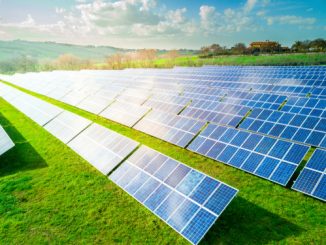The Ministry of New and Renewable Energy (MNRE) has recently released a revised plan for the creation of offshore wind energy projects. India’s west coast and the southernmost point of the country, both have good potential for offshore wind farm development, as per the preliminary research conducted by National Institute of Wind Energy (NIWE).
With NIWE as a knowledge partner, the FOWIND (Facilitating Offshore Wind in India) consortium evaluated the offshore wind potential. Following this, eight zones each off the coasts of Gujarat and Tamil Nadu were selected as possible offshore wind energy zones based on a multi-criteria approach that involved evaluation of several aspects such as wind resource, bathymetry, etc.
The following three models have been suggested with a focus towards the need for the development of country’s offshore wind farms.
Model A: This model of offshore wind project development shall be applicable to the offshore wind zones for which MNRE or NIWE have already completed adequate studies to enable developers to submit bids and begin the development of offshore wind projects. A single bid, two-stage process with an e-reverse auction (e-RA) will be used to develop these projects. SECI will conduct the bid process. Either the tariff or the VGF amount necessary to make the project financially feasible with a predetermined tariff will serve as the foundation for the e-RA. A bid for 0.5 GW capacity would be put out by MNRE or its designated agency in the area of identified sites off the coasts of Gujarat and Tamil Nadu where stage-1 approvals have already been granted. The Offshore Wind Power Developer (OWPD) and MNRE or its designated agency will enter into a lease agreement for 35 years in accordance with lease rules. From the date of concession agreement, the OWPD will be required to commission the project in four years. For the duration of the lease, the OWPD will be obliged to pay the yearly floor lease cost of Rs. 1.0 lakhs per square kilometre per year. For the initial project, a location with an equivalent capacity of 1.0 GW has been chosen. The identified site will be subjected to requisite study and survey by NIWE, and upon completion of this work, a bid for a 500 MW project will be floated within this location. The project development process would be same as Gujarat’s process of project development.
Model B: For this model, offshore wind sites will be allocated under a lease with site exclusivity over the seabed throughout the survey period, and project development will take place without any support from the viability gap funding (VGF). This model envisions the development of offshore wind projects for the sale of electricity under open access, captive, or third-party sales. As a part of this model, it is suggested that the first possible sites for 14 GW equivalent offshore wind power will be made available. The first offer for 4 GW capacity of these 14 GW is likely to be floated on December 1, 2023, and the second bid for 3 GW is anticipated to be floated in 2024–2025. With regard to the bidding process, after two years, the government may request bids for the tariff-based purchase of power for DISCOMs. Benefits such as offering power evacuation infrastructure from the off-shore pooling delivery point, waiving transmission fees, providing credits for renewable energy with multipliers, providing credits for carbon credits, etc. as defined from time to time by the state or central government shall be applicable.
Model C: For this model, a study will be conducted without exclusive use of the seabed during the survey period, and projects will be developed without any VGF support. This model will be used for the sites chosen by the developers within the country’s exclusive economic zones, except the locations already chosen under Models A and B for which studies have already been finished, are ongoing, or have not yet begun. After receiving a consent letter from NIWE, a study will be conducted for a period of three years. Any of the following approaches may be used in the bidding: Either bidding on lease, allocation fees, or revenue sharing in projects for captive consumption, third-party sales, or exchange sales under open access mechanisms will be used or any other transparent bidding procedure determined by the Government may be used. Another approach that may be used is the tariff-based competitive bidding in the event of power procurement by discoms, the central government, or state governments. Furthermore, the project developer that performed the survey of the relevant sites is also eligible to submit a proposal for the distribution of offshore sites, with first right of refusal in case of site-specific bidding. However, the potential developer in this zone must complete project development without using any Central Financial Assistance.
The developer will be responsible for evacuating the power up to the interconnection point in order to maintain connectivity with the grid. Furthermore, for connecting the project with an offshore sub-station at the required voltage level, which will be determined by Central Transmission Utility (CTU), the developer must install the offshore wind projects, including inter-array cables. CTU would create the transmission infrastructure for the offshore sub-station and beyond. According to the metering rule, metering must be carried out at each connection point for the purpose of energy accounting. The benefit of the inter-state transmission system waiver will be available for projects completed until December 31, 2032.



